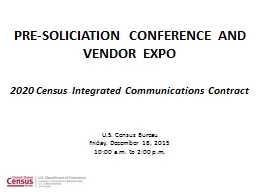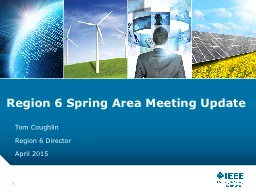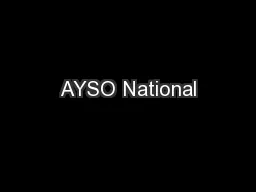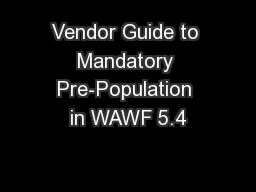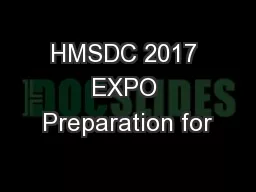PPT-PRE-SOLICIATION CONFERENCE AND VENDOR EXPO
Author : min-jolicoeur | Published Date : 2016-09-13
2020 Census Integrated Communications Contract US Census Bureau Friday December 18 2015 1000 am to 200 pm WELCOME AND OPENING REMARKS Jeannie Shiffer Associate Director
Presentation Embed Code
Download Presentation
Download Presentation The PPT/PDF document "PRE-SOLICIATION CONFERENCE AND VENDOR EX..." is the property of its rightful owner. Permission is granted to download and print the materials on this website for personal, non-commercial use only, and to display it on your personal computer provided you do not modify the materials and that you retain all copyright notices contained in the materials. By downloading content from our website, you accept the terms of this agreement.
PRE-SOLICIATION CONFERENCE AND VENDOR EXPO: Transcript
Download Rules Of Document
"PRE-SOLICIATION CONFERENCE AND VENDOR EXPO"The content belongs to its owner. You may download and print it for personal use, without modification, and keep all copyright notices. By downloading, you agree to these terms.
Related Documents

